When the General Motors plant in Scarborough, Ontario, closed 30 years ago, in 1993, Gayle Hurmuses’s exhibition remained as a tribute to her co-workers and friends — her extended family, as she called them. These are her words.
Around Thanksgiving of 1989, General Motors announced that they would be closing the van plant in Scarborough, Ontario, and awarding the van contract to Flint, Michigan, the subject of the documentary film, Roger & Me. On May 6, 1993, production ceased, and the process of dismantling the plant began.
Immediately, crews of workers who had previously been employed in production began to dismantle our former workplace. They disassembled, sorted packed, and shipped off the tools and machinery, throwing away what General Motors couldn't use. Workbenches, chairs, cabinets and tables were cut apart with blowtorches and sold as scrap. By the end of July there was almost nothing left to mark the passage of thousands of people, and the history of a vital, caring community.
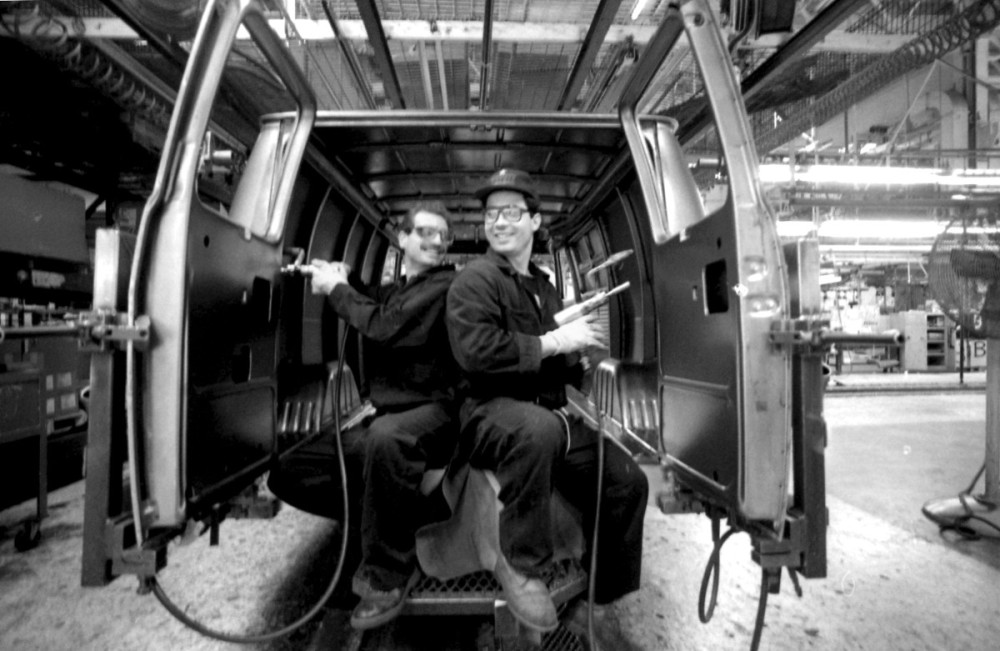
Haissam Ramadan and Frank Tridico working back-to- back bracing each other as they attach the rear doors in Respot 3. All day, every day.
The community within the plant was a network which crossed boundaries of race, culture, gender, and age. From the paint-shop garden, to plant gate collections, and the internal phone system, which was as efficient as Reuters or AP, the plant was as tightly knit, and as protective at times, as armour.
To ensure that the passage of this community would not go unmarked, the union, Local 303 of the Canadian Auto Workers, along with the Government of the Province of Ontario, sponsored me for the material costs of a photographic documentation of the workforce within the plant, as part of a heritage project. By the time that the plant closed, I had shot about 130 rolls of film and had collected 743 release forms. Since then, another 25 rolls have been shot documenting the dismantling and demolition of the plant. This is an enormously personal document, as I was myself a longtime employee at the van plant and was inspired to study photography upon the death of a close friend and co-worker, to create a tribute to my friends.
I started November 23, 1983 in Body shop, in Respot 1, a close-knit community somewhat skeptical of the presence of a woman in their midst. There was some doubt expressed that a little girl like me would ever be able to perform the jobs assigned. What was far more striking, however, were the good wishes to succeed, and the generosity of those who helped make endurable the grueling, exhausting, and painful period until my muscles and stamina developed.
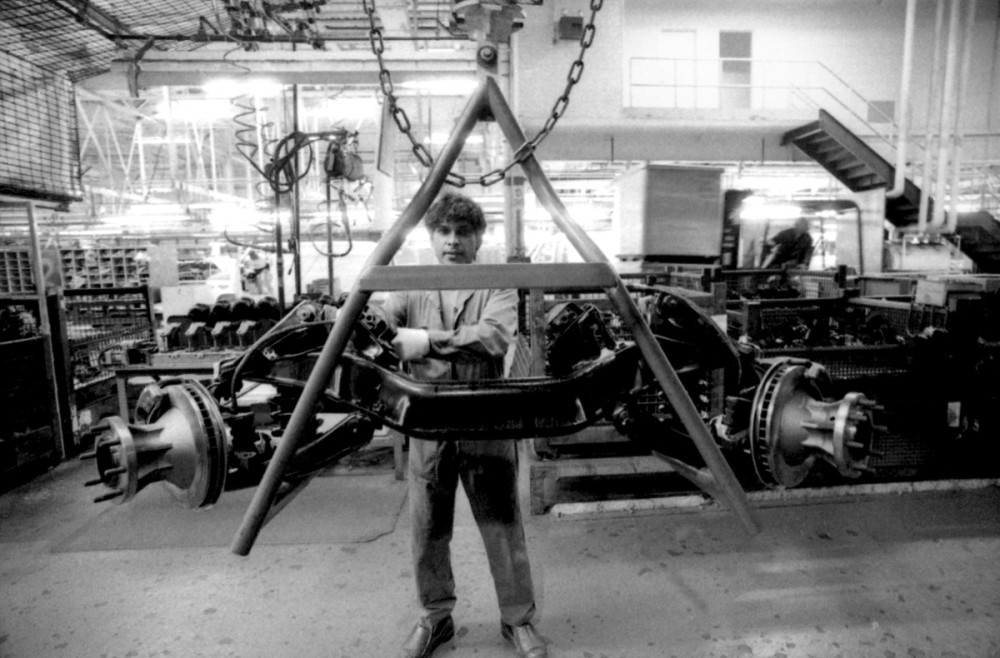
Bridgnath Theodore: “A” is for “Axle Line.” At the very beginning of the production line, building the axles was a “sub- assembly job.” Next after the Axle Line, the motor would be attached. Axle and motor together were then hoisted up, conveyed above the workers on the line, through the plant, to be attached to the rest of the car elsewhere in the facility.
It was not unusual for co-workers to help in both small and large ways someone who was struggling with a job. Most jobs were designed to fill every second, and if a worker was new, or having a bad day, the pace could be inhumanely brutal. It was common practice for people whose jobs had a more relaxed pace to step in and take over for someone who was struggling, to offer some relief and support. More striking were the people whose jobs were also difficult, who would extend themselves further to help someone else.
The factory was loud, grimy, and chaotic, a hostile and alien landscape, yet thoroughly humanized by the spirit of its inhabitants. Artifacts were abundant, armchairs and couches built from packing crates, murals, caricatures, and the crowning glory, the rooftop patio garden, an oasis created and maintained each year by Barry Mitchell, a tresman in Paint shop.
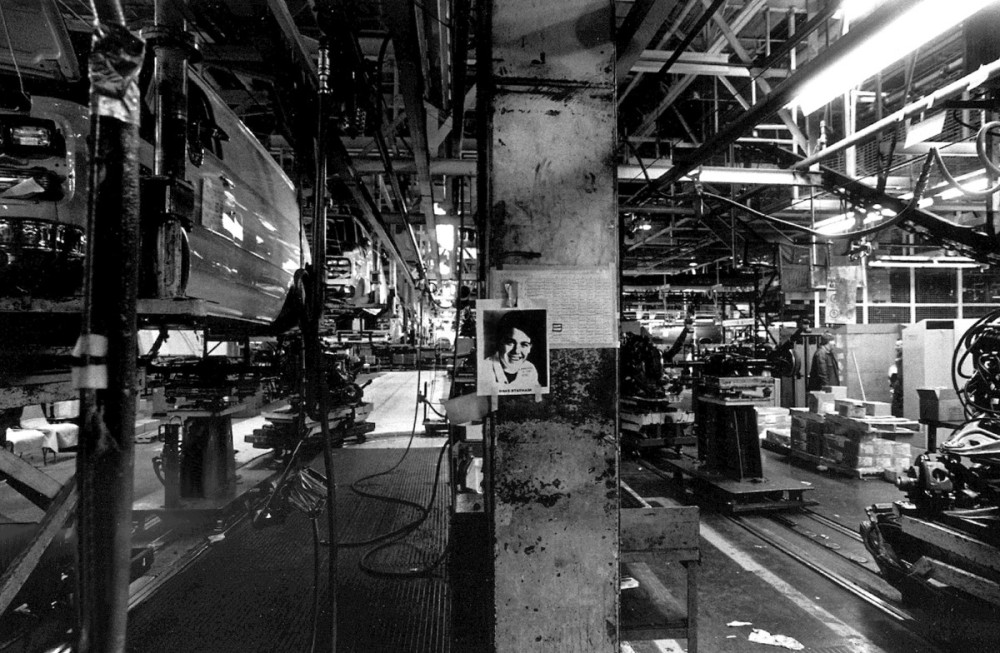
Dave Statham (The Legendary Donny Satin) worked in Chassis One, and was one of many with family members in the plant. Dave performs as a singer in the Greater Toronto Area. A member of several bands including Oshawa’s Swing Shift, he also plays drums in The Dirt Squirrel All-Stars.
In a bleak era seemingly dominated by violence and hatred, my friends and co-workers provided a basis for faith in humanity.
This exhibition is my tribute to that community, to my "Extended Family." Drawing mainly on the van plant photographs, it also includes others, which were shot on earlier occasions, at parties, pares, and events. Its purpose is to give a human face to the jobs that were lost, to present the intangible losses that cannot figure in economists’ charts. Most important to me is that this plant closure be seen not as a displacement of 2,800 jobs, but as the displacement of the 2,800 people who worked them.
It is also important that attention be paid not only to the economic tragedy, but also to the disruption and loss of the community, which was so important and vibrant a part of our lives.
As Glen Seidman remarked to me on May 5, 1993, "I keep remembering that a while after I first started here, my girlfriend and I broke up. I was pretty upset about it, and one of the older guys that I worked with said, ‘Don't worry, after 20 years you might be with your second or third wife, but you'll still have the same co-workers.’ And I keep thinking, he was right, I've worked here for 19 years, and there are guys that I've worked with all of that time that are with their second or third wives, but they still have the same co-workers, in fact, I still work with that same guy. Tomorrow, it's over."
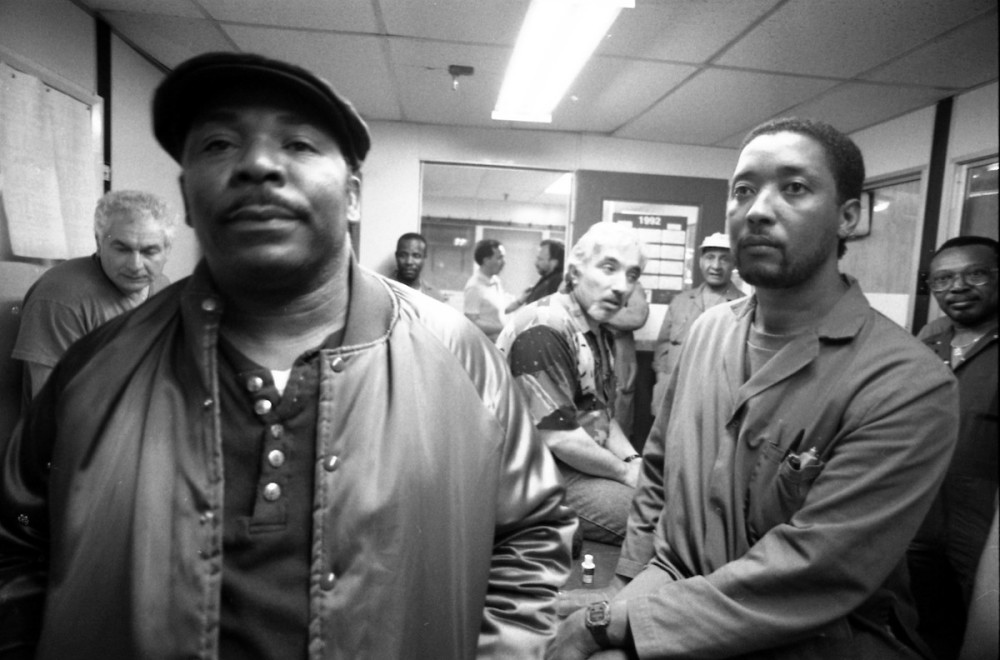
Minutes after the last van rolled off the line on May 6, 1993, I photographed some of my co-workers who had gathered in the union office to find out about their post-shutdown jobs. No one believed it was going to end, but it did. Foreground: Ron Douglas, Sam Lattibeaudere; centre row: Guglielmo (Bill) Buscema, Chris Angelidis, Dave Francis; background: Harold James, Gary, Donnie White, Trevor Davies.
Our lives still connect; there are union functions, elections, and we remain members until our benefits run out. Lots of people lived near the plant and we run into each other at the mall. We catch up, exchange gossip, touch hands, and move on. There are Christmas cards and phone calls, but our lives are quite different now. It isn't over, exactly, but nothing is the same. The house is gone, and no other roof will ever bring us together.
In shooting the photographs for this exhibition, I focused on these themes: the work, which draws everyone together and provides a common purpose; the community, which provides respite from the drudgery; the individuals, who give the community its face; their artifacts, and the way in which the work environment is humanized and made into habitat — both as a sculptural artifact, and as an organic form with its own crude beauty. Underlying all of that is, of course, the very subjective theme of my own relationship to all of these parts.
Gayle Hurmuses, May 1, 1995
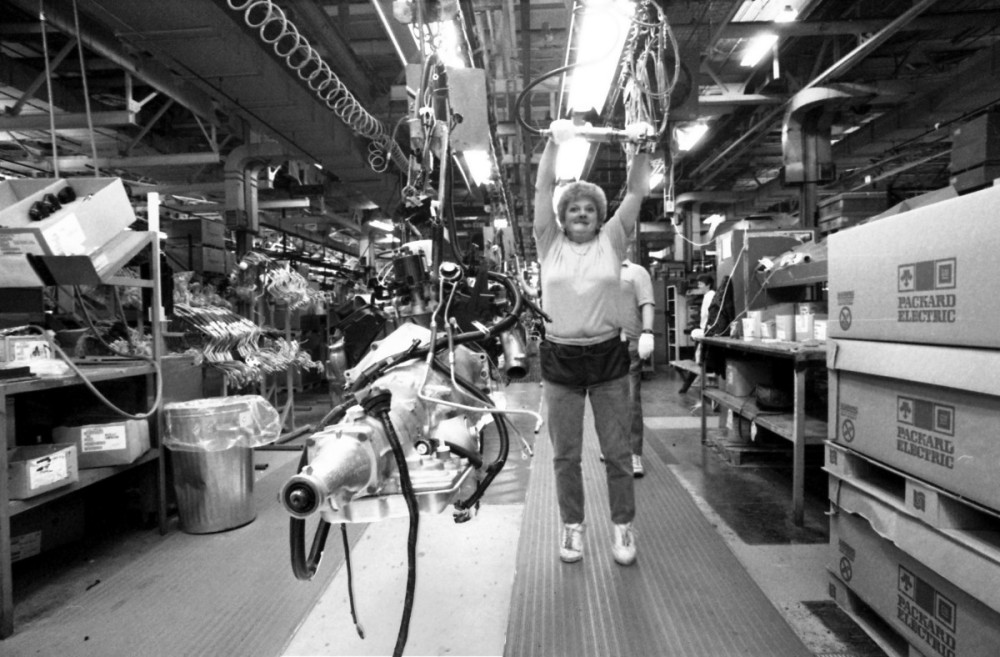
Colette Gagnon wanted a photo to show her son her job. She was one of a cohort from Ste Therese, a Québec plant that was undergoing a layoff at the time. Ste Therese was later also shut down, in 2002.











